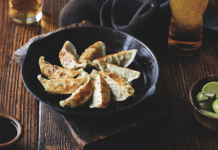The Beer Orders of 25 years ago aren’t just history – they’re still affecting the pub industry today, writes Phil Mellows.
Twenty-five years ago, while most people were watching the Berlin Wall tumble, British brewers had other things on their minds: the Supply of Beer (Tied Estate) Order 1989 was one of the most radical state interventions in any UK industry short of nationalisation.
Today, we are still feeling the effects of the Beer Orders, as the legislation became known, so this isn’t just history – if you want to understand the pub industry today, you have to understand the Beer Orders.
The decades before the Beer Orders had seen consolidation resulting in six big brewers: Bass, Allied, Whitbread, Grand Met, Courage and Scottish & Newcastle. Between them, they owned 34,000 pubs – nearly 60% of the UK total – all ‘tied’ to buying the owning brewer’s products.
Then an investigation by the Monopolies and Mergers Commission (MMC) declared that this amounted to a ‘complex monopoly’ and recommended brewers’ tied estates should be capped at 2,000 pubs.
Surprisingly, the Big Six weren’t too bothered at first. After all, a Conservative government was in power and the Tories had always been good friends of the brewers. But then trade secretary Lord Young let slip he was “minded to accept” the MMC’s findings. The fierce lobbying that ensued succeeded only in reducing to half the difference the number of pubs brewers above the threshold had to divest.
The reason why a Margaret Thatcher government, of all governments, went ahead with such a drastic state intervention remains a matter of debate. Underlying it all, arguably, was a concern that in a globalised economy, British brewing wasn’t competitive enough and in those giant pub estates was sitting a vast potential that had to be unlocked.
Whatever the reason, the Beer Orders changed both pubs and the patterns of pub ownership and control, including the relationship between landlords and tenants. Over the next two years, the Big Six brewers were forced to sell a total of 11,000 pubs, causing turmoil and distress, and stimulating a fresh focus on on-trade retailing that has brought in new kinds of pub operator and new styles of pub.
At the time, the Tories promised cheaper beer, which didn’t happen, and hoped it would seed a generation of small multiple pub businesses, which did happen eventually, but in a roundabout way.
First came the birth of the pubcos: non-brewing firms set up mostly by former brewery executives to run the bulk of the 11,000 pubs that came on the market – and continue trading relationships with the brewers.
These grew and consolidated into Enterprise Inns and Punch Taverns, each of which owned and tied more pubs than the biggest of the Big Six. The brewers, in turn, became more interested in their managed estates, opening new venues in town and city centres.
Alongside traditional short-term tenancies, the brewers developed long lease agreements, a model pioneered by Grand Met before the Beer Orders. The idea was to encourage a more entrepreneurial breed of publican with greater investment in and more control over the business – but who was still tied for beer and sometimes other products.
Five of the Big Six were preparing to abandon either brewing or pub retailing altogether. Only Scottish & Newcastle – now Heineken UK – continues to do both. Perhaps, under global pressures, that would have happened anyway. But the Beer Orders certainly speeded things up.
As well as the all-tenanted pubcos, there was competition from managed pubcos. JD Wetherspoon was already well established, but dozens of new players emerged, mainly targeting young audiences on the high streets and families on the outskirts of towns.
Neither of the new models proved sustainable. By the end of the last decade, Enterprise and Punch were weighed down by debt and started to offload hundreds of pubs. Like the big brewers, they came under government scrutiny over the operation of the tie and treatment of tenants. The statutory code of practice currently being formulated is the result.
And nearly all the first wave of managed pubcos collapsed because of high rents and under-investment.
Amid the rubble, though, new shoots began to poke through.
In recent years, in parallel with the explosion of microbrewing, scores of individual and small multiple pub operators have sprung up. While many pubs have closed, many have also been rescued by entrepreneurs with vision and none of the hang-ups that may have held back the traditional publican.
Some have picked up freehold pubs discarded by pubcos and brewers. Some have taken leases and worked in partnership with their landlords. Some have combined the two.
For many, food is an important element, but without the formalities of a restaurant or the pretensions of a gastropub. Good food is more frequently an integral part of running a modern community pub.
Menus are diverse and imaginative, from exotic and the ethnic to posh pub “world” food grub and revivals of old-fashioned snacks such as scotch eggs, pork pies and sausage rolls. Anything goes and these pubs are meeting customers’ needs right through the day, not just at traditional meal times.
What the successful ones have in common, even in the most basic style of pub, is an attention to quality and retail standards that is lifting the whole sector.
Regional brewers were left out of the demands of the Beer Orders, though you have to wonder how many would survive the tougher competition from international brewers and retail specialists. Indeed, a number didn’t make it through. But the remainder are enjoying a resurgence of the tied house model and raising their standards to compete.
These are growing, too. The largest, Greene King and Marston’s, are now both national rather than regional companies, and with its recent takeover of Spirit Group, Greene King increased its estate to more than 3,000 pubs – legally, since the Beer Orders were revoked in 2003.
For a time, there was a move away from managed houses towards tenanted and leased estates, but that pendulum has started to swing back as brewers look to take greater control over at least a minority of their estate.
A halfway house between managed and tenancy has also emerged, with the pub trade giving less experienced licensees enhanced support at the cost of a little of their autonomy. At the same time, tenanted pubcos have been letting more of their houses free of tie to the right operators.
So the pub industry left to us by the Beer Orders 25 years ago is a complex, diverse and shifting world. Getting a grip on it isn’t easy, but the effort will repay any wholesaler who takes the time and trouble.
*MPs voted last month to introduce a clause in statutory code to force pubcos and brewers with more than 500 pubs to offer tenants a rent-only option, free of tie. Companies must now wait to see whether the legislation gets through the House of Lords.







